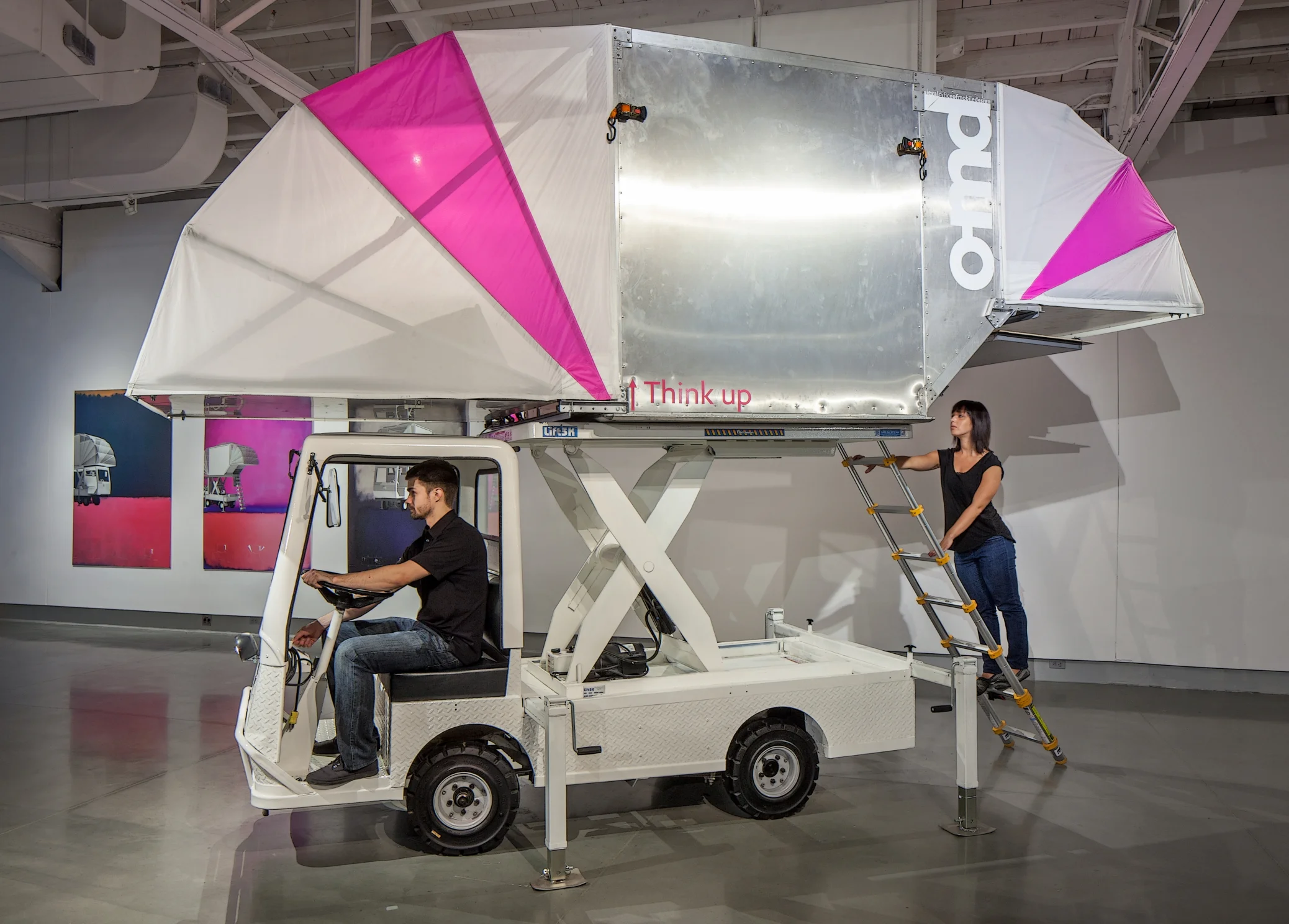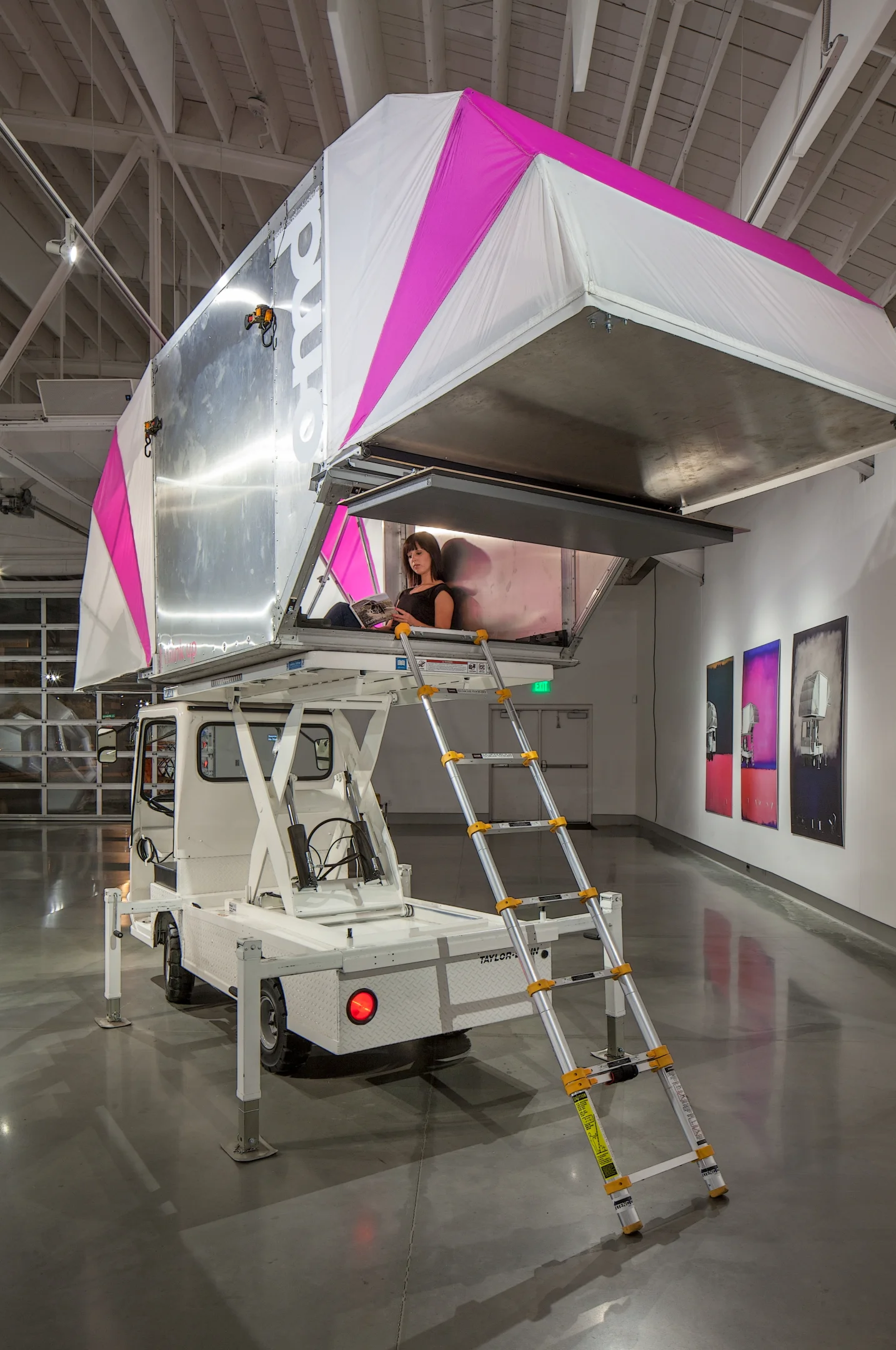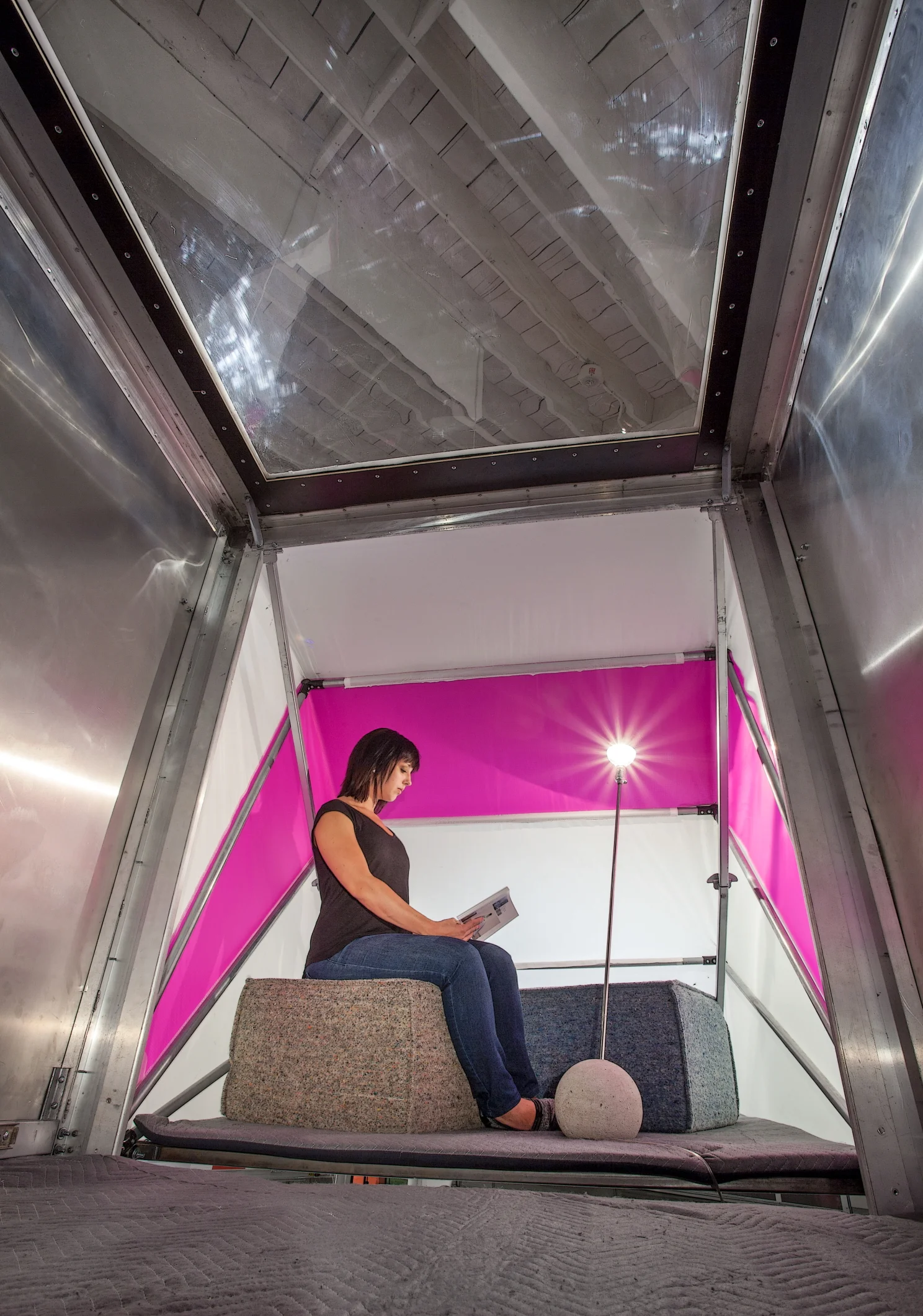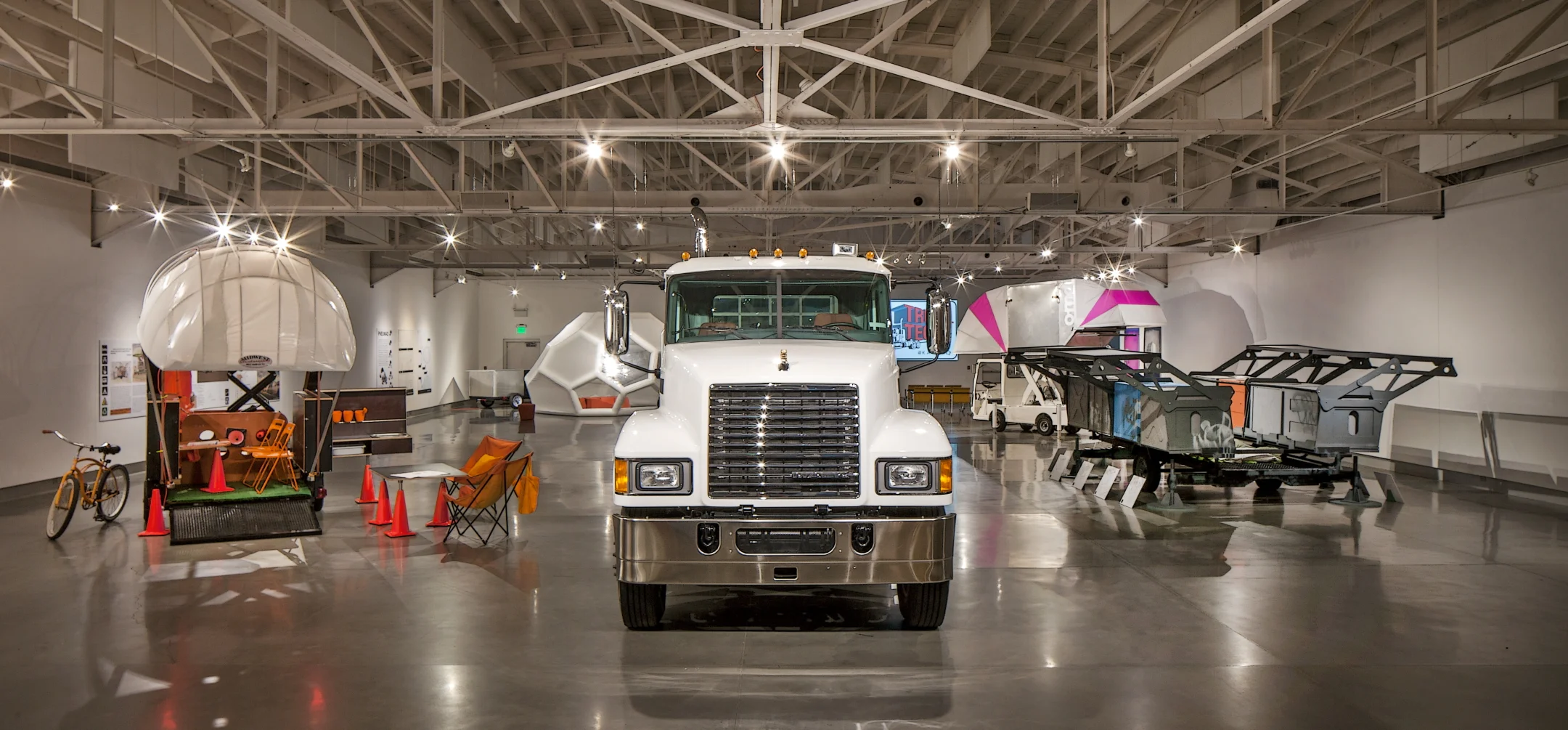The AERO-Mobile is a movable flexible exhibition and retail space made of recycled parts discarded by the aerospace industry. This impermanent architecture envisions buildings as a series of ULD’s (Unit Load Device) up- cycled as exhibition space platforms, mounted on electric trucks, allowing for spontaneous pop-up experiences to be deployed throughout the city center and its surrounding suburban neighborhoods. Using social media and a new mobile App the AERO fleet is easily located or transformed as the functions for the artist, curator or merchant fluctuate. Visually engaging, the AERO- Mobile creates an individual or a communal outlet for instantaneous consumerism, complimenting and eflecting today’s world where life is anything but static.
Truck-A- Tecture at KANEKO sets the stage for a debate on an unlikely pair of themes: prefabricated architectural solutions and the mobile culture of trucking. The intent of the project is to bring about a productive collision between the architect's vision of efficient and sustainable housing and the reality of nomadic contemporary lifestyles involving a multiplicity of locations and sites. The viability of prefabricated building solutions was a precondition of modern architecture from the 1920s, expressing the larger societal tendency toward efficient living. But the idea of prefabrication dates back to ancient Rome, at least, and the logical extension of ideas about modular construction has never ceased to percolate in the minds of designers. Likewise, in the early 1960s, the architects who founded Archigram invoked "a new agenda" in which "nomadism is the dominant social force" calling on architects to respond by creating structures that allow for movement and transformation.
The idea of living "on the road" is as old as human civilization, and today it increasingly seems like a viable alternative to traditional housing.
The ultimate aim of Truck-A- Tecture is to challenge current definitions of prefabrication and mobile architecture and to expand the horizon of their applications in everyday living to embrace contemporary economic and geographic realities, harking back to what Archigram called an "altered reading of the familiar."





